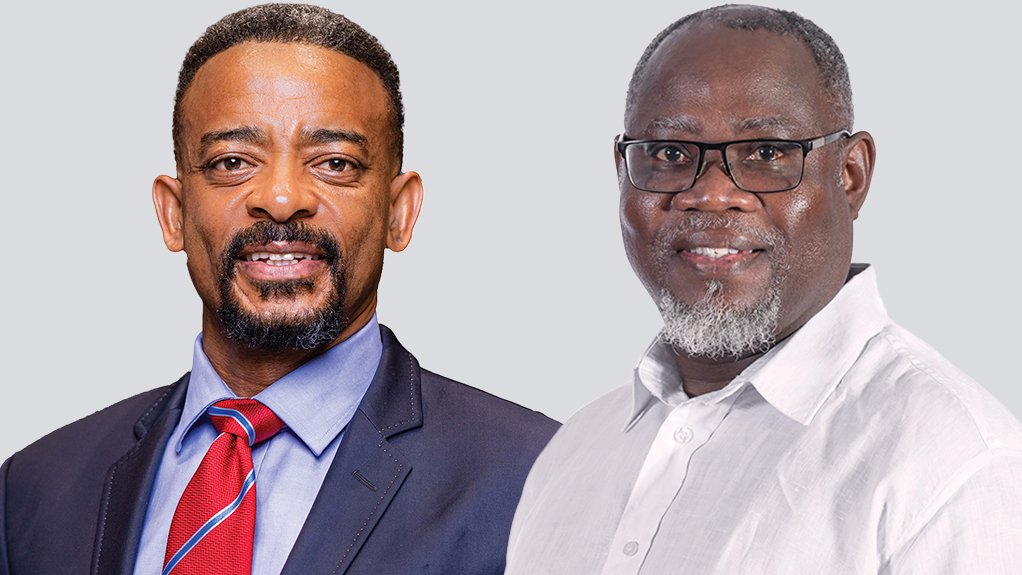JOHANNESBURG (miningweekly.com) – The South African economy requires fruitful outcomes to emerge quickly from the planned memorandum of understanding (MoU) that that Minerals Council South Africa and South Africa’s Council for Mineral Technology (Mintek) intended signing on Friday, September 19, but then postponed.
It is appropriate that a new date be set soon for the MoU signing by Minerals Council CEO Mzila Mthenjane and Mintek CEO Dr Molefi Motuku as South Africa's private and public metals and minerals sectors need to exercise maximum collaboration during this time of worrying global disruption.
It must also be demanded that the proposed MoU's collaboration promise between the private sector’s Minerals Council and the public sector’s Mintek be taken to the next level transparently, so that all can witness greater efficiency in the processes used to add value to South Africa’s mineral endowment, the property of the South African people.
South Africa’s active patent development, strong extraction and processing skillsets, and the emerging adoption of advanced processing technologies across different minerals has got to be taken much further for all to see.
There is no reason why South Africa cannot become a global contender of note in the field of decarbonisation at the same time.
Expansion into clean-energy metals can drive sector growth and attract investment, with profit margins and export value increased by downstream beneficiation and value-addition strategies.
The establishment of a clean new minerals energy complex with electricity provided by the sun and the wind is there for the taking.
Even if South Africa had to quadruple the generation of renewable electricity, it is unlikely that all of it would be taken up – and it comes at a lower price.
Moreover, the green energy provided would allow South Africa’s exports to quality for premium prices and avoid the penalties envisaged for non-green products.
The MoU must make South Africa smarter by ensuring that this country’s mineral wealth is taken to level that is higher than ever before – and this needs to be done with the utmost urgency.
The modern technology that is available to use has reached a new peak and collaborative use of AI and other advanced digital solutions is what can be offered by this MoU so that big and small companies benefit economically.
The Boston Consulting Group this week reported how companies using AI to advance decarbonisation across the value chain are benefiting.
The group also presented insight into the extent to which climate change continues to increase, causing significant financial losses through the uptick in the greater frequency at which floods, droughts and wildfires are occurring.
OPPORTUNITY ‘RIGHT NOW’
As has already been pointed out by the Minerals Council, South Africa has an opportunity “right now” to grow its mining sector for the benefit of South Africa’s people, against the backdrop of improved resource custodianship having the potential to increase mineral reserve sizes and extend the lives of mining operations.
In addition, solar and wind energy can reduce operational costs and improve environmental, social and governance ratings, which can in turn attract responsible investment and enhance security of supply.
Moreover, the adoption of AI, automation and digitisation can improve mining efficiencies.
Collaborative research and development through the MoU as well as through the simultaneous help of universities and original-equipment manufacturers can position South Africa in mining innovation.
ADVANCES ALREADY MADE
An exceptionally pure rare earth product has been delivered by Rainbow Rare Earths, which recovered the elements for this from phosphogypsum stacks, waste product from phosphoric acid production. Phosphogypsum availability comes about through the mining of a hard-rock phosphate deposit, which has been the work of Foskor for the last 60 years.
What is particularly noteworthy is that this was brought about with the help of Mintek, in that Rainbow’s large pilot plant was built in collaboration with Mintek, which derives its mandate from South Africa’s Minerals Technology Act.
Another example of an advance that has already been made is in the development of SmeltDirect technology, which saves more than 70% of electricity consumption needed for smelting, reduces carbon emissions by 60% and takes its users to the bottom of the cost curve.
Unlike the 4 MW required by conventional systems, only 1.2 MW of electricity is needed to produce a ton of alloy, and some 700 jobs are created for every 200 000 t of alloy produced a year.
The Johannesburg Stock Exchange-listed diversified mining company African Rainbow Minerals (ARM), headed by executive chairperson Dr Patrice Motsepe, has brought SmeltDirect to the fore to help South Africa to win back the major market share that it has lost in the global ferroalloy business.
It is ARM's Machadodorp Works, in Mpumalanga, that has brought the bankable SmeltDirect to the point of commercialisation. Interestingly, four international patents have been granted to SmeltDirect, the sub-systems of which include the pelletiser of raw materials to produce composite agglomerates, the bed where smelting occurs and the brush-arc furnace where slag and metal are separated.
It is this privately developed technology that can help South Africa win back the ferroalloy business, which has been lost as a result of poor publicly managed power generation.
In addition to Mintek, the Minerals Council also has partnerships with the Mandela Mining Precinct as well as the Council for Scientific and Industrial Research, and collaboration must be demanded across all these organisations in view of the concerning disruption present in today's world.
EMAIL THIS ARTICLE SAVE THIS ARTICLE ARTICLE ENQUIRY FEEDBACK
To subscribe email subscriptions@creamermedia.co.za or click here
To advertise email advertising@creamermedia.co.za or click here











